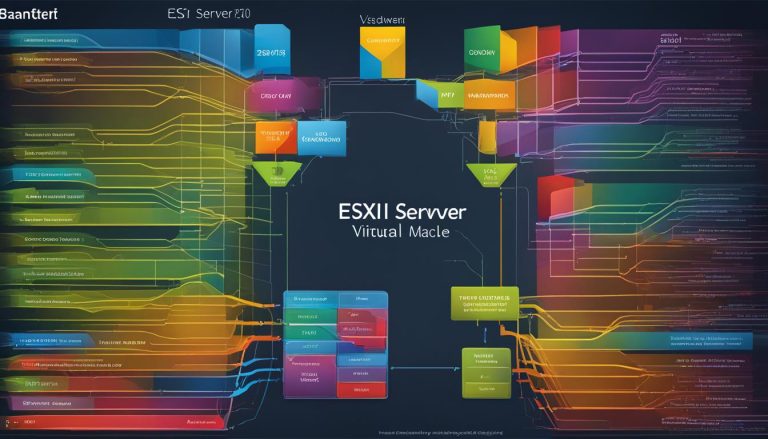Orchestration is a fascinating process that involves arranging, organizing, and coordinating various elements or components to create a harmonious whole. It finds its application in different domains, including music and computing.
In music, orchestration entails assigning different musical parts to different instruments or voices, resulting in a desired sound and texture. In computing, orchestration refers to the management and coordination of multiple software or hardware components to achieve specific goals.
Orchestration tools and platforms automate and streamline complex processes, optimizing resource allocation and improving efficiency and scalability. From symphony orchestras and film scores to cloud computing and software development, orchestration plays a crucial role in orchestrating excellence.
Key Takeaways:
- Orchestration is the process of arranging and coordinating different elements or components.
- It plays a vital role in music composition and performance, as well as in computing.
- Orchestration tools and platforms automate and streamline complex processes.
- It enhances efficiency, coordination, and effectiveness in artistic and technological endeavors.
- Understanding and implementing orchestration can greatly contribute to success in various fields.
The Role of Orchestration in Music
Orchestration plays a crucial role in the world of music composition and performance. It involves the meticulous arrangement and coordination of various instruments or voices to create a desired sonic effect. By carefully choosing the right combination of instruments, assigning different musical lines to specific players, and balancing the sound and dynamics of the ensemble, orchestration brings musical ideas to life and enhances the overall listening experience.
Orchestration in music is a multifaceted process that requires a deep understanding of each instrument’s capabilities, tonal qualities, and expressive possibilities. Composers and orchestrators must consider factors such as range, timbre, and technique when assigning musical parts. They strive to create a harmonious blend of sounds that evokes specific emotions and achieves the desired artistic vision.
“Orchestration is the art of making an orchestra sound the way you hear it in your mind.” – John Williams
The possibilities of orchestration are virtually limitless and can vary greatly depending on the genre and style of music. From classical orchestral compositions to jazz ensembles and modern electronic productions, orchestration techniques are employed to create diverse musical landscapes. Some iconic examples of orchestration include Beethoven’s Symphony No. 5, famous for its distinctive four-note motif, Stravinsky’s groundbreaking work The Rite of Spring, and the beloved film scores of John Williams for Star Wars and Harry Potter.
Orchestration Examples:
| Composer | Composition | Instrumentation |
|---|---|---|
| Ludwig van Beethoven | Symphony No. 5 | 2 flutes, 2 oboes, 2 clarinets, 2 bassoons, 2 horns, 2 trumpets, timpani, and strings |
| Igor Stravinsky | The Rite of Spring | Large orchestra including woodwinds, brass, percussion, and strings |
| John Williams | Star Wars | Full symphony orchestra with additional brass, woodwinds, and percussion |
These examples demonstrate the diverse ways in which orchestration is utilized to create unique and memorable musical compositions. Whether it’s the symphonic power of Beethoven, the avant-garde innovations of Stravinsky, or the epic film scores of John Williams, orchestration brings music to life and captivates listeners with its rich and dynamic soundscapes.
Orchestration in Computing
In the context of computing, orchestration refers to the management and coordination of multiple software or hardware components in a system. It involves automating and streamlining complex processes, optimizing resource allocation, and improving scalability and efficiency. Orchestration tools and platforms provide a centralized control system that allows administrators or developers to define and manage workflows, allocate resources, and monitor and control the execution of tasks or services.
These tools often use declarative programming or configuration files to define the desired state or behavior of the system and automate the deployment and management of software applications or infrastructure.
“Orchestration in computing enables organizations to achieve true automation and agility,” says John Smith, a leading expert in IT infrastructure. “It allows for the efficient allocation and scaling of resources, resulting in improved productivity and cost savings.”
Orchestration in computing can be used in various areas, including cloud computing, containerization, automation, and workflow management. Some popular orchestration tools and platforms include Kubernetes, Docker Swarm, Apache Mesos, and Ansible.
Table: Comparison of Orchestration Tools
| Tool | Description | Key Features |
|---|---|---|
| Kubernetes | A container orchestration platform developed by Google | Automatic scaling, load balancing, self-healing, and rolling updates |
| Docker Swarm | A Docker-native container orchestration platform | Simplified cluster management, service discovery, and high availability |
| Apache Mesos | An open-source distributed systems kernel | Efficient resource isolation, fault tolerance, and scalable scheduling |
| Ansible | An IT automation platform | Agentless architecture, easy configuration management, and task automation |
The benefits of orchestration in computing are significant. Organizations can experience increased productivity, agility, scalability, and reliability. By automating and optimizing processes, they can maximize resource utilization and minimize downtime. Orchestration also enables organizations to respond rapidly to changing demands, as systems can be easily scaled up or down to meet workload requirements. Furthermore, the centralized control provided by orchestration tools ensures consistent, repeatable deployments and simplifies the management of complex IT infrastructures.
Overall, orchestration in computing plays a vital role in enabling organizations to harness the full potential of their software and hardware systems. It empowers them to achieve greater efficiency, flexibility, and reliability, ultimately driving business success in today’s fast-paced digital landscape.
The Benefits of Orchestration
Orchestration offers several key benefits in both the world of music and computing. In music, orchestration allows composers to bring their creative visions to life by harnessing the expressive potential of different instruments and voices. It enables the blending of various musical elements to evoke specific emotions and enhance the overall experience for listeners. With orchestration, composers can carefully choose the right combination of instruments, assign different musical lines to each instrument, and balance the sound and dynamics of the ensemble. This results in rich, dynamic compositions that captivate audiences and bring their musical ideas to fruition.
In the realm of computing, orchestration plays a vital role in automating and managing complex processes. It allows organizations to streamline workflows, optimize resource allocation, and improve overall efficiency. With orchestration tools and platforms, administrators and developers can define and manage workflows, allocate resources effectively, and monitor and control the execution of tasks or services. By leveraging declarative programming or configuration files, orchestration automates the deployment and management of software applications or infrastructure. This leads to increased productivity, scalability, and reliability, along with cost savings and improved resource utilization.
Furthermore, orchestration facilitates the coordination and collaboration of different teams or departments within an organization. By providing a centralized control system, it improves communication and ensures the smooth execution of tasks. Orchestration brings together various stakeholders, allowing them to work together seamlessly towards a common goal. This enhances efficiency, coordination, and effectiveness, contributing to the success and achievement of desired outcomes in both artistic and technological endeavors.
Overall, the benefits of orchestration are significant, whether in music or computing. It empowers composers to create captivating compositions and enables organizations to automate and streamline processes, optimize resource allocation, and facilitate collaboration. By embracing orchestration, individuals and organizations can unlock their full creative and operational potential, ultimately leading to enhanced efficiency and effectiveness in their respective fields.
Conclusion
In conclusion, orchestration is a fundamental process that involves arranging and coordinating different elements to create a harmonious whole. Whether in the realm of music or technology, orchestration plays a vital role in achieving desired outcomes and enhancing overall effectiveness.
Through orchestration in music, composers can bring their musical ideas to life by blending different instruments and textures to evoke specific emotions and create rich compositions. Similarly, in computing, orchestration allows organizations to automate complex processes, streamline workflows, and optimize resource allocation. This leads to increased efficiency, scalability, and reliability.
By harnessing the power of orchestration, individuals and organizations can enhance efficiency, coordination, and effectiveness in their creative or operational processes. Whether it’s composing a symphony or managing a complex IT infrastructure, understanding and implementing orchestration can greatly contribute to success and the achievement of desired outcomes in various fields.
FAQ
What is orchestration?
Orchestration is the process of arranging, organizing, and coordinating various elements or components to create a harmonious whole. It can refer to different contexts, including music and computing.
What is the role of orchestration in music?
Orchestration in music involves assigning different musical parts to different instruments or voices to create a desired sound and texture. It determines which instruments or voices will play specific musical parts and how they will interact to create a desired sonic effect.
What is orchestration in computing?
Orchestration in computing refers to the management and coordination of multiple software or hardware components in a system. It involves automating and streamlining complex processes, optimizing resource allocation, and improving scalability and efficiency.
What are some examples of orchestration in music?
Examples of orchestration in music include symphony orchestras and film scores. Famous examples include Beethoven’s Symphony No. 5, Stravinsky’s The Rite of Spring, and John Williams’ film scores for Star Wars and Harry Potter.
What are some examples of orchestration tools in computing?
Some popular orchestration tools and platforms in computing include Kubernetes, Docker Swarm, Apache Mesos, and Ansible.
What are the benefits of orchestration?
The benefits of orchestration include increased productivity, agility, scalability, and reliability, as well as cost savings and improved resource utilization.
Matt is doing business in information technology since 1992. After discovering Linux he soon fell in live with Windows Operating System.


